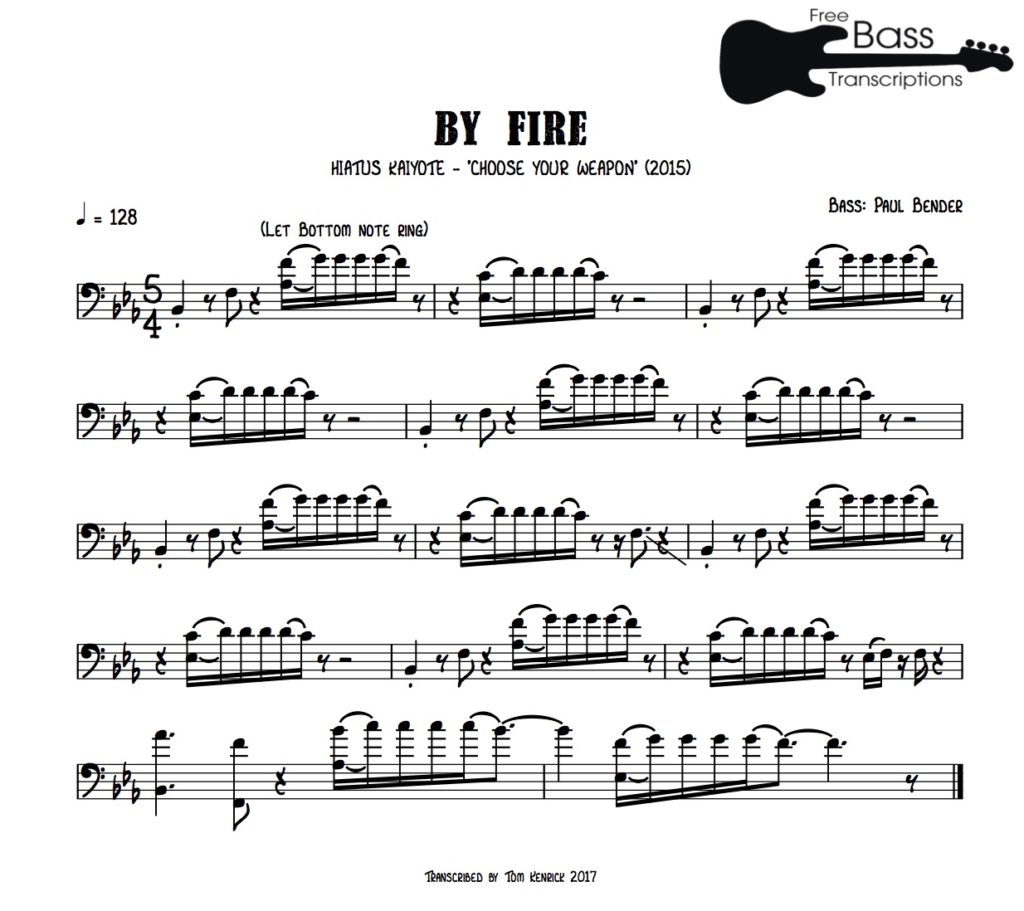After an extended hiatus (geddit?) the lumbering juggernaut that is Groove of The Week is back (for those who are sick of, fear not – it’ll be over soon).
High Time For Some Odd Time
So far, all of the featured grooves have been relatively conventional single note, 4/4 affairs. Time to change all that.
How about playing a 5/4 groove that uses chordal techniques interspersed with single note 16th lines at 128bpm? Enter Hiatus Kaiyote’s ‘By Fire’:
I first encountered this tune as a commissioned transcription for a client (before you ask, I no longer undertake bespoke transcription work, sorry). Writing out the whole tune was challenging, to say the least. Here’s how the main groove looks on paper:
Hiatus Kaiyote’s bass player Paul Bender casually matches the keyboard’s lines note for note for the entire song, throwing in double stops to provide a more detailed representation of the harmony (the double stops in question start off as major 7ths, with the last two bars using major 10ths to provide variation).
In order to properly execute this line and let the root note of the double stop ring out while articulating the melody we’re going to have to adopt free strokes with the plucking hand – this is where the fingers pluck upwards and away from the bass, as opposed to our normal rest strokes where the plucking fingers play into the bass and come to rest on a lower string.
Free, or not to free? That is the question
Normally, I avoid free strokes because they result in what I’d term as homeopathic bass playing – since most of the energy is directed away from the bass it’s hard to achieve a solid tone and things end up sounding a bit weedy. However, in situations where double stops are required, it’s almost impossible to achieve the correct sound with rest strokes – your thumb is plucking the root note using a free stroke, so trying to make your fingers perform a rest stroke at the same time is somewhat brain-scrambling. Each stroke also requires a slightly different hand position, so changing between the two is physically demanding to coordinate at fast tempos.
So, how best to tackle this difficult line? The answer is the same as this often cited (and rather bizarre) question:
‘How do you eat an elephant?’
The answer? One mouthful at a time – isolate small sections of the line and practise slower than you think you need to until they become second nature and you’re not consciously thinking about the technique or the notes. (https://www.apolloclinic.com/)



Dude, you’re a legend. Any chance you would have the full transcription around? Thanks mate
Dude this is awesome. Keep up the good work!